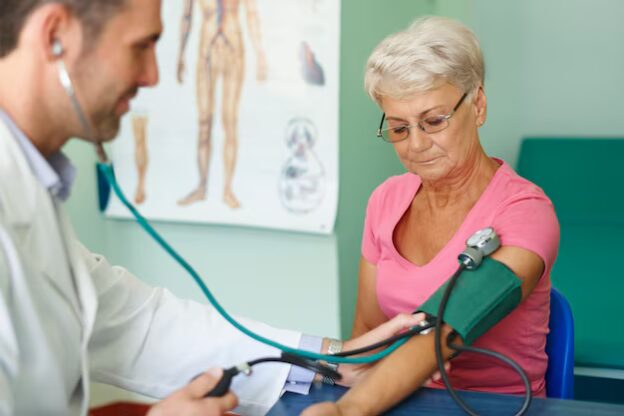Leg pain is a common complaint that many people experience. While it may be easy to attribute the discomfort to muscle fatigue or overuse, persistent leg pain could be a sign of an underlying condition. One such condition is venous hypertension, a circulatory issue that occurs when blood flow in the veins is compromised. This article will explore the causes, symptoms, and treatment options for venous hypertension, helping you understand how poor circulation may be affecting your legs.
What Is Venous Hypertension?
Venous hypertension is a condition where the pressure in the veins of the legs becomes abnormally high due to poor circulation. This usually happens when the veins’ valves, which help regulate blood flow, become weak or damaged. As a result, blood struggles to return to the heart, leading to pooling in the legs and increased pressure within the veins.
Causes of Venous Hypertension
Several factors contribute to the development of venous hypertension, including:
-
Chronic Venous Insufficiency (CVI) – A condition where the veins have difficulty sending blood back to the heart.
-
Deep Vein Thrombosis (DVT) – Blood clots in the deep veins can obstruct blood flow and increase venous pressure.
-
Obesity – Excess weight can put additional pressure on the veins in the legs, leading to circulation issues.
-
Prolonged Standing or Sitting – Staying in one position for too long can cause blood to pool in the legs.
-
Aging – As we age, veins may lose elasticity, making it harder for them to function efficiently.
-
Genetics – A family history of circulatory problems can increase the risk of developing venous hypertension.
Symptoms of Venous Hypertension
If you are experiencing venous hypertension, you may notice:
-
Persistent leg pain or aching
-
Swelling in the lower legs and ankles
-
Heaviness or tiredness in the legs
-
Skin discoloration, especially around the ankles
-
The development of varicose veins
-
Leg ulcers or slow-healing wounds
These symptoms tend to worsen after prolonged standing or sitting and may improve when the legs are elevated.
How Is Venous Hypertension Diagnosed?
A healthcare provider may use the following diagnostic methods to determine if you have venous hypertension:
-
Physical Examination – Checking for swelling, skin changes, and varicose veins.
-
Doppler Ultrasound – A non-invasive imaging test that assesses blood flow in the veins.
-
Venography – A specialized X-ray using contrast dye to visualize blood flow in the veins.
Treatment Options for Venous Hypertension
Managing venous hypertension often involves lifestyle changes, medical treatments, and in some cases, surgical procedures. Here are some of the most effective treatment approaches:
Lifestyle Changes
-
Regular Exercise – Activities such as walking and swimming help improve circulation.
-
Weight Management – Maintaining a healthy weight reduces pressure on the veins.
-
Leg Elevation – Raising your legs above heart level helps blood flow back to the heart.
-
Compression Stockings – These help support circulation and prevent blood pooling.
Medical Treatments
-
Medications – Diuretics may be prescribed to reduce swelling, while anticoagulants help prevent clot formation.
-
Sclerotherapy – A minimally invasive treatment that closes off damaged veins.
-
Endovenous Laser Therapy (EVLT) – A laser-based procedure that seals off faulty veins.
Surgical Options
For severe cases of venous hypertension, surgical interventions such as vein stripping or bypass surgery may be necessary to restore proper blood flow.
Preventing Venous Hypertension
While some risk factors, like genetics and aging, cannot be controlled, you can take proactive steps to prevent venous hypertension:
-
Stay active and avoid prolonged periods of sitting or standing.
-
Maintain a balanced diet and a healthy weight.
-
Wear compression stockings if recommended by a doctor.
-
Stay hydrated to support good circulation.
When to See a Doctor
If you are experiencing persistent leg pain, swelling, or other signs of poor circulation, it is essential to consult a healthcare professional. Early diagnosis and intervention can prevent complications such as leg ulcers and severe vein damage.
Conclusion
Leg pain should not be ignored, especially if it persists or worsens over time. Venous hypertension is a common yet serious condition that affects circulation in the legs, leading to discomfort and potential complications. By understanding the causes, symptoms, and treatment options, you can take steps to manage and prevent this condition effectively. If you suspect venous hypertension, seek medical advice to improve your vascular health and overall well-being.








